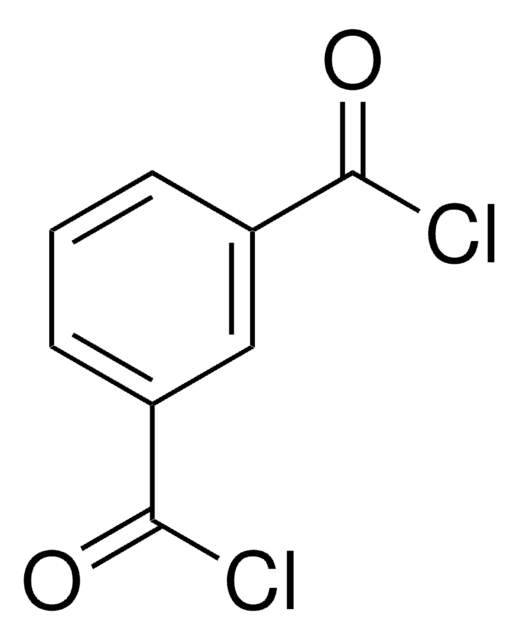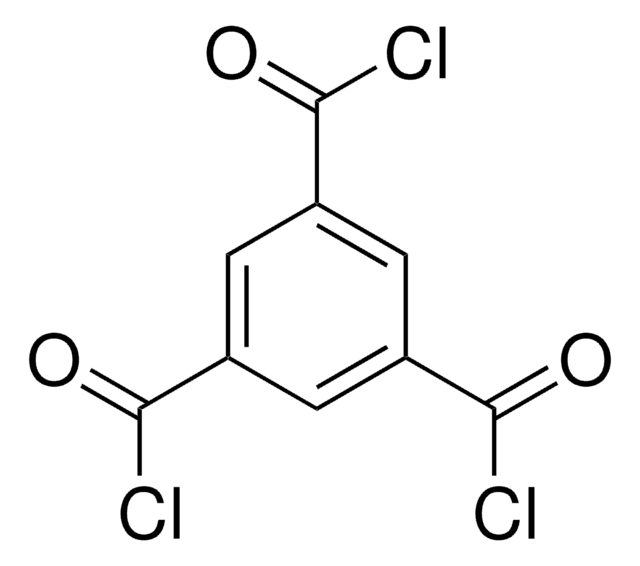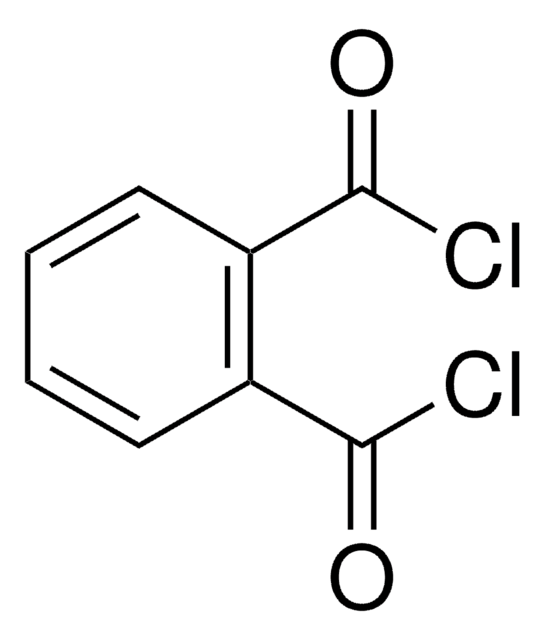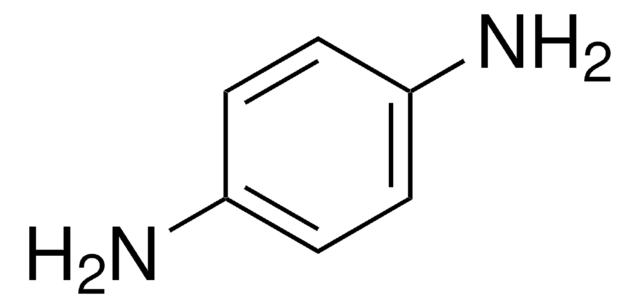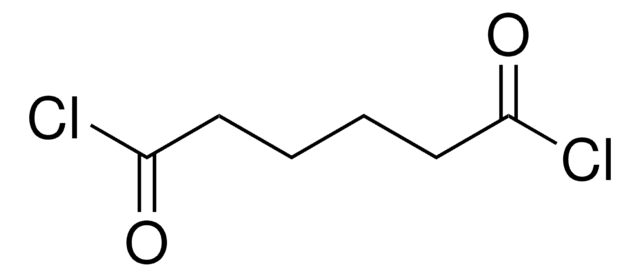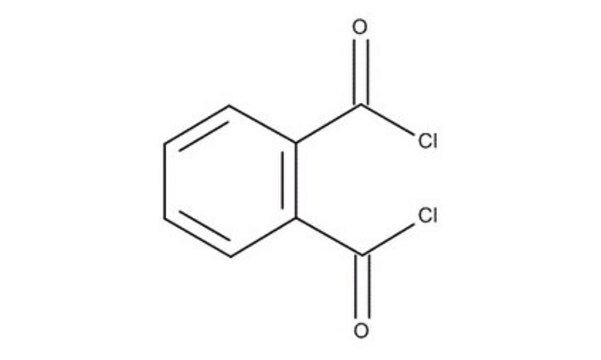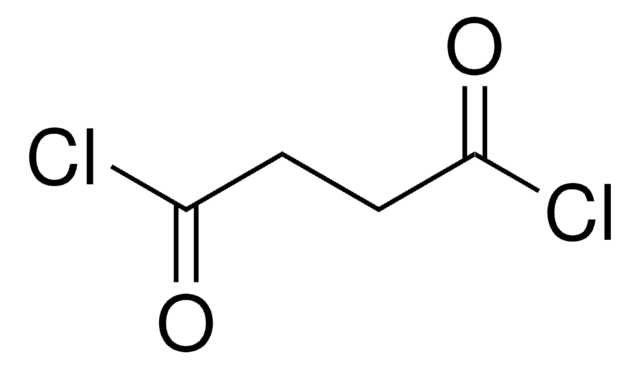120871
Terephthaloyl chloride
≥99%, flakes
Synonym(s):
Terephthalic acid chloride, Terephthaloyl dichloride
About This Item
Recommended Products
vapor density
7 (vs air)
Quality Level
vapor pressure
0.02 mmHg ( 25 °C)
Assay
≥99%
form
flakes
bp
266 °C (lit.)
mp
79-81 °C (lit.)
solubility
ethanol: soluble 100 mg/mL, clear, colorless
SMILES string
ClC(=O)c1ccc(cc1)C(Cl)=O
InChI
1S/C8H4Cl2O2/c9-7(11)5-1-2-6(4-3-5)8(10)12/h1-4H
InChI key
LXEJRKJRKIFVNY-UHFFFAOYSA-N
Looking for similar products? Visit Product Comparison Guide
Related Categories
General description
Application
Legal Information
Signal Word
Danger
Hazard Statements
Precautionary Statements
Hazard Classifications
Acute Tox. 3 Inhalation - Eye Dam. 1 - Skin Corr. 1A - STOT SE 3
Target Organs
Respiratory system
Storage Class Code
6.1A - Combustible acute toxic Cat. 1 and 2 / very toxic hazardous materials
WGK
WGK 1
Flash Point(F)
356.0 °F - closed cup
Flash Point(C)
180 °C - closed cup
Personal Protective Equipment
Choose from one of the most recent versions:
Already Own This Product?
Find documentation for the products that you have recently purchased in the Document Library.
Customers Also Viewed
Articles
Molecular Layer Deposition of Organic and Hybrid Organic-Inorganic Polymers
Our team of scientists has experience in all areas of research including Life Science, Material Science, Chemical Synthesis, Chromatography, Analytical and many others.
Contact Technical Service